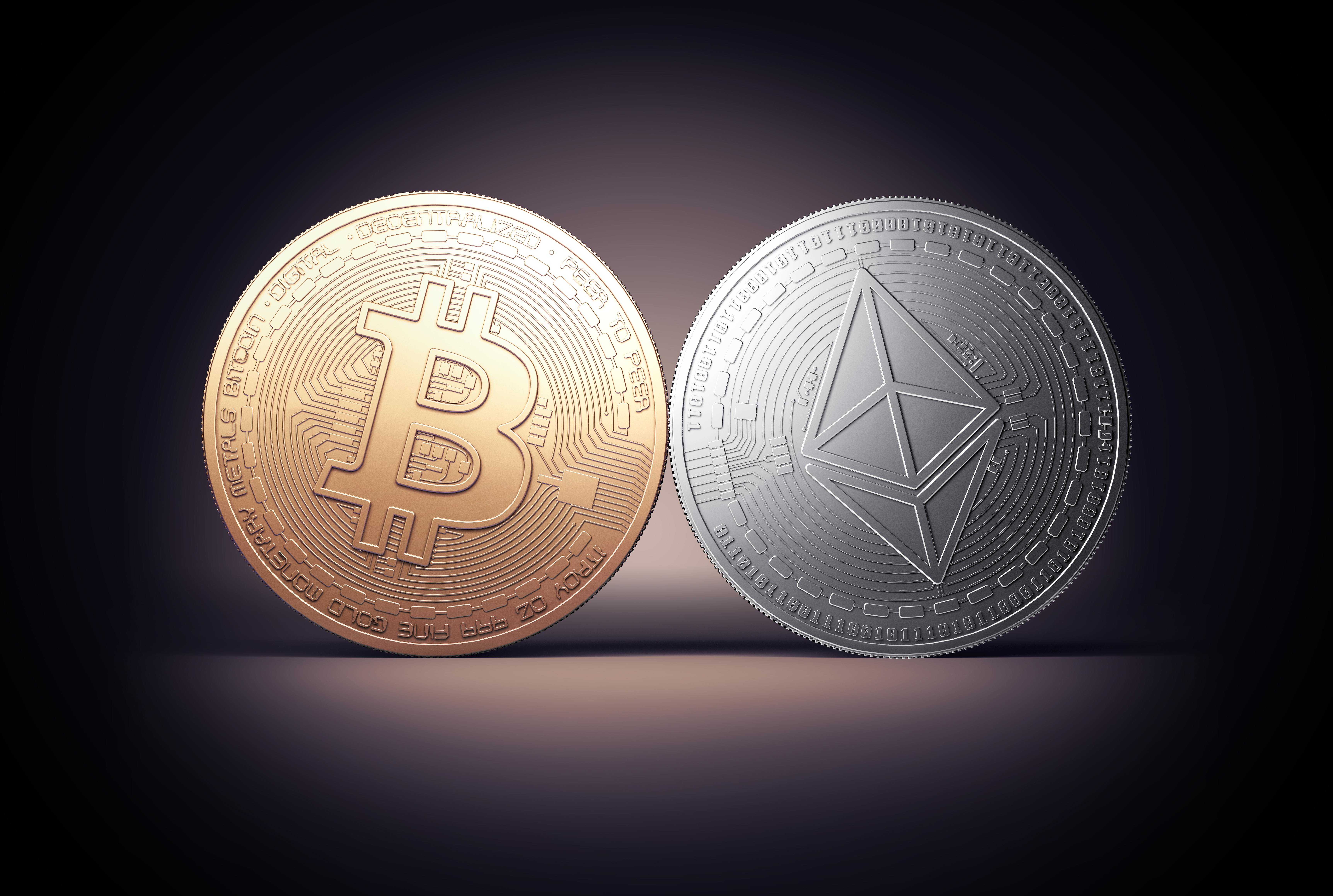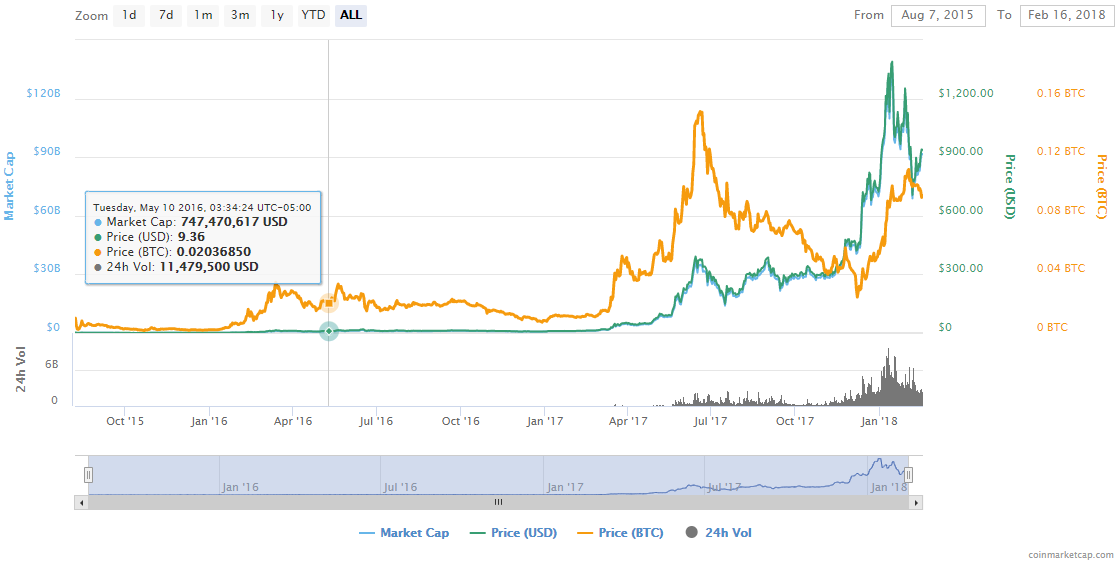The Ethereum Effect: Graphics Card Price Watch (Updated)
Update, 2/16/18, 1:30pm PT: The price of Ethereum has fluctuated wildly since we published our original article; meanwhile, the price of GPUs has done the same. We've updated this article substantially from the original to reflect current market trends.
The 2017 GPU shortage, which we had previously referred to as quite possibly the worst GPU shortage in history, was a rather dark time for gamers and PC enthusiasts. The price of some mid-range and high-end GPUs doubled, and for more than a month it was nearly impossible to find an Nvidia GeForce GTX 1070 or an AMD Radeon RX 580. As bad as that shortage was, in light of the new prevailing shortage, we must now expurgate our original statement. If the GPU shortage observed last summer was horrible, the current shortage is nothing short of a complete fiasco.
The Price Of Ethereum And Bitcoin
Just like last summer, cryptocurrency mining is the fundamental cause of the current shortage. The price of Ethereum, one of the most popular cryptocurrencies, peaked at around $400 in June before dwindling down to roughly $150 on July 16. It continued to fluctuate wildly until November, when it began to rapidly increase in value one again. Ethereum hit its record high of $1,389 on January 15 before plummeting $400 to its current value of $938 as of February 16. Although this momentary decline might give the impression that the rush to mine Ethereum is once again dissipating, it is far too soon to say for sure.
Bitcoin has also recently upsurged. It peaked at roughly $18,737 on December 18. It has since fallen to $10,108 and continues to fluctuate rapidly.
The Price Of Gaming (Or Mining)
The sudden increase in cryptocurrency mining has pushed the price of graphics cards through the roof. Popular favorites of cryptocurrency miners such as Nvidia’s GTX 1060 and 1070 graphics cards, as well as AMD’s RX 570 and 580 GPUs, have all doubled if not tripled in price--and that’s just when you can actually find them in stock at all. While researching prices for this article, we observed some of these graphics cards being sold in excess of $1,000. A few GTX 1070s have even managed to hit $1,300.
While the price on essentially all graphics cards has increased, most remain in stock. This contrasts with last year’s shortage, which saw some GPUs stay out of stock for weeks. The continued availability of popular models is likely due to the steeper price and better management of GPU inventories by retailers and OEMs.
Unlike the shortage last summer, which had little effect on the low-end and ultra-high-end cards, the current shortage is affecting all segments of the market. Low-end cards have not doubled in price, but none of them appear to be available at their rated MSRP. Low-end cards remain in stock for the most part, however, so they may be all you can get if you really need a new graphics card.
Get Tom's Hardware's best news and in-depth reviews, straight to your inbox.
At the high end of the market, AMD’s Vega GPUs have been strongly affected, shooting up significantly more than their Nvidia counterparts. If you want to buy a Vega 56 GPU, plan to spend about $1,000 for something that is supposed to be $400. Nvidia’s GTX 1080s and GTX 1080 Tis have seen their prices increase by a few hundred dollars as well, but the price difference is less substantial than most other cards. Only ultra-low-end GPUs like the RX 550 and GT 1030 have been less affected than the GTX 1080 and GTX 1080 Ti at this time.
Gamers looking for affordable alternatives to buying one of these overpriced graphics cards should carefully consider AMD’s new Ryzen 5 2400G, if it meets your needs for a low-end gaming PC. You could also consider a GPU bundle to help reduce the price of your overall system, or look into one of these other methods of acquiring a gaming GPU.
Although the scramble to buy GPUs and mine cryptocurrency is predominantly responsible for the current shortage, a cryptocurrency recession is unlikely to invoke a return to normality in the GPU market. As we reported last year, GPU cores are typically ordered months in advance by OEM board partners from AMD and Nvidia, who in turn must order them months in advance from fabs. These fabs are unable to quickly shift production to respond to changes in the market, as they have a limited production capacity and orders from other customers that are also placed months in advance that must be filled.
Taken together, this information points to the shortage continuing for a few months, at the very least, while companies rebuild their stocks.
What’s The Answer To Cryptocurrency Mining?
With the second large-scale GPU shortage in less than a year, we’re forced to question what can be done to prevent this from occurring again. We previously discussed the idea of companies increasing production to meet demand, but due to the unpredictable nature of cryptocurrency mining, a significant boost in production could be potentially harmful to OEMs. We’ll likely see a new wave of mining-oriented hardware, just like we saw last year, but will that be enough to ease the strain on the GPU market? Keep watching here for more updates as the situation evolves.
MORE: Best Deals
MORE: Best CPUs
MORE: Best Graphics
-
bit_user Reply
Thanks for the updates. Especially reaching out to manufacturers for comments.19911947 said:The Ethereum Effect: Graphics Card Price Watch (Updated) : Read more
BTW, I still think the GTX 1070 MSRP should be made current, as it would better show how much the current prices are inflated. -
IInuyasha74 Reply19912181 said:
Thanks for the updates. Especially reaching out to manufacturers for comments.19911947 said:The Ethereum Effect: Graphics Card Price Watch (Updated) : Read more
BTW, I still think the GTX 1070 MSRP should be made current, as it would better show how much the current prices are inflated.
No problem, glad you enjoy the article. I saw you asked several times in the last comment page for us to do so. We were in the process of talking to them already, but we like to keep these things quiet until we have enough ready to publish so unfortunately I couldn't say anything sooner.
I thought about doing it for the GTX 1070, but prices never quiet settled on the $350 price. A few dropped down to between $330 and $350, but most remained at $350-$400, so I feel the original MSRP better represents what the card has cost to date. I did adjust the GTX 1080s MSRP to what Nvidia set it at after the GTX 1080 TI launched though, as those certainly have dropped in price. Even through this shortage, they are priced very competitively. -
InvalidError Reply
MSRPs are what the manufacturers think their products' retail price should be for general market and consumer guidance, not a representation of actual street prices. Manufacturers rarely update MSRPs after launch unless there is a disruptive shift in the competitive landscape forcing them to review their margins.19912181 said:BTW, I still think the GTX 1070 MSRP should be made current, as it would better show how much the current prices are inflated. -
Ncogneto Any chance of ever seeing a review of the motherboards tailored for mining? Be an interesting read......Reply -
bit_user Reply
Yes, like how Nvidia repriced lower-end models when they launched the GTX 1080 Ti. That's what we're talking about, here. Not quite sure what you're on about.19913159 said:Manufacturers rarely update MSRPs after launch unless there is a disruptive shift in the competitive landscape forcing them to review their margins.
-
bit_user Reply
Put what you want, but just make the column heading consistent. Don't call it the MSRP if it's not.19912225 said:
I thought about doing it for the GTX 1070, but prices never quiet settled on the $350 price. A few dropped down to between $330 and $350, but most remained at $350-$400, so I feel the original MSRP better represents what the card has cost to date. I did adjust the GTX 1080s MSRP to what Nvidia set it at after the GTX 1080 TI launched though, as those certainly have dropped in price. Even through this shortage, they are priced very competitively.19912181 said:BTW, I still think the GTX 1070 MSRP should be made current, as it would better show how much the current prices are inflated.
If you want to put where entry-level prices settled after the GTX 1080 Ti's launch, do it. But then the column heading should be something like Typical Price on May 15th (or whenever you decide prices generally bottomed out). -
10tacle Not all is bad with this mining craze. It wasn't that long ago that we, the PC gamer master race, started worrying about the future of PC gaming and CPU/GPU manufacturers as consoles started increasing in popularity between the PS3/4 and XBox 360/One. You guys remember all the "PC gaming is slowly dying" hysteria. I don't see how this 21st Century gold rush of cryptocurrency mining can be bad for AMD, Intel, and Nvidia.Reply
Then of course there is the used GPU market. I recently sold my SLI 970s for $480. Two months ago and prior, they were maxed out selling on eBay for $150. I took that money and bought an EVGA 1080Ti SC2 Gaming for $740 (NewEgg). My original plan was waiting for the consumer level Voltas to come out next year, but this seller's market on recent generation mid-tier and above GPUs is just way too hard to pass up. Especially as one being on the fence on upgrading or waiting.
It's almost like being the reverse of a stock buyer who snaps up cheap stocks when the market hits bottom (like smart people did with AMD). Sell high and run! -
redgarl You make more by buying Nvidia and AMD stock than investing in mining. I just made 1000$ over my 10.43$ stock from AMD to this morning 14$.Reply -
bit_user Reply
You can get lucky a few times, but it's hard to repeatedly time the market well.19925696 said:You make more by buying Nvidia and AMD stock than investing in mining. I just made 1000$ over my 10.43$ stock from AMD to this morning 14$.
So, when there's a relatively stable payout, whether it's dividends or burning watts for crypto coins (especially if you're not paying the electric bill), then it has certain advantages. -
bit_user Reply
With crypto-currencies classed as assets, I think many investment banks already own some.19927972 said:What if the banks start buying all the internet coins in the market (and they can ) and then control the internet currency as well ?
They can't buy all, because that would be like buying all the gold in the world. You'd run out of money, first. Even if you had enough money to buy it all at the beginning, the price would start to go up as you bought more.
And I still don't really see what this accomplishes. If someone bought enough bitcoin (for example) to destroy its liquidity, then people could just create another cryptocurrency that's similar (perhaps even forked from bitcoin's very codebase). Meanwhile, what does the bank gain? Banks don't really care which currency wins - it's the governments who care about that.
Eh, central banks basically just control interest rates and inflation. Not to downplay those two factors, but there are more interesting government activities & policies that shape economies: budgets, taxation, subsidies, investments, social programs (health care, social security, unemployment insurance, welfare), business laws, trade policies, accounting rules, banking rules (leverage, risk exposure), etc.19927972 said:central banks controlling people money and economy.

